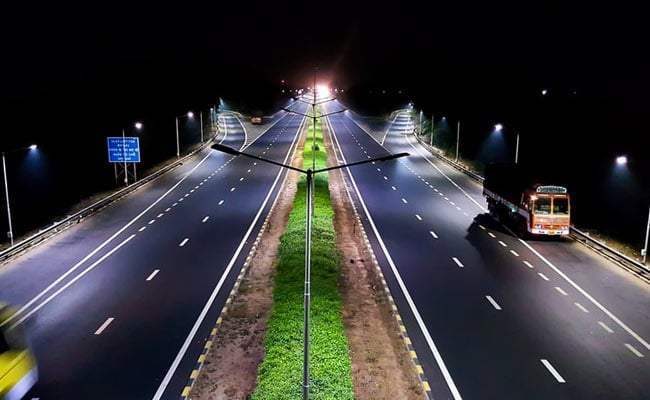

State election results, confidence booster for investors
Barely a day after Prime Minister Narendra Modi asserted that India is on its way to becoming the third largest economy sooner than expected, the State Bank of India in its Ecowrap report said that the country will surpass Japan and Germany in 2027. A decade ago, the Indian GDP was the 11th largest in the world.
The news, however, has not come as a surprise. A flurry of policy reforms besides several schemes including Make in India with a thrust on manufacturing, PM Gati Shakti– the gigantic infrastructure drive, as well as the targeted distribution of social welfare schemes are some of the key drivers of the India growth story. Last year, India surpassed the UK to become the fifth largest economy in the world.
“Things are very upbeat for India with many multinational companies now looking either to expand or foray into the Indian market, which holds enormous potential with rising middle class. This is not only boosting consumption but also engaging the country’s vast labour pool,” Assocham’s Secretary General Deepak Sood said, adding that though the economy went through a blip during the Covid phase, the recovery has been strong.
The geopolitical and geo-economic shifts – a large number of multinational companies are now looking at a China Plus strategy—have strengthened India’s prospects. In December last year, a survey conducted by Japan External Trade Organisation (JETRO) revealed more than 72 per cent of Japanese companies were eager to expand their businesses in India. In contrast, only 33.4 per cent were keen to expand their business operations in China.
“Most Japanese companies are looking at India to expand their businesses. The experience of the Japanese companies, which are already operating in India, has been very good. The sentiment here is positive,” Takashi Suzuki, Chief Director General (South Asia), JETRO said. He also pointed out that a host of Japanese companies are now looking at India for product development for the global markets. “They would manufacture here and then export. Africa and the western countries – are the main regions that the companies would be looking to export their products from India,” he said.
While the Reserve Bank of India has projected a 6.5 per cent growth rate for India during the current financial year, the International Monetary Fund, this week, raised its forecast for the country to 6.1 per cent. The World Bank has pegged India’s growth rate at 6.3 per cent.
The SBI, in its report, said that India’s GDP growth rate will go “beyond 6.5 per cent for FY 24.” It added that “in a world that is ravaged by uncertainties, 6.5 -7 per cent growth is the new normal.”
Based on the economic indicators, most analysts expect India’s GDP is expected to expand by 8 per cent in the first quarter of the current financial year after posting a 6.1 per cent growth in the last quarter of 2022-2023.
“India’s growth rate continues to be fairly strong. In fact, it is significantly higher than not only the world growth rate but almost all other economies,” Sanjeev Sanyal, Member of the Economic Advisory Council to the Prime Minister (EAC-PM) earlier told India Narrative. He added that a growth rate of 6.5 per cent amid the global uncertainties was creditable.
Unlike China, India also has a youth dividend, which can be ploughed into its rising economy. Recently, India surpassed China to become the world’s most populated country. According to a Brookings study, by 2030, India will be home to 357 million young consumers below 30 years, the largest “young consumer market” in the world. At the same time, E&Y noted that India would remain the largest provider of human resources in the world. About 24.3 per cent of the incremental global workforce over the next decade will come from India, it said.
Unsurprisingly, Modi pointed out that India can provide the largest pool of human resources to power global Industry 4.0. “Due to various factors, India may have missed being a part of earlier industrial revolutions. But India has the potential to lead Industry 4.0, because, for the first time in recent history, we have many different factors like demography, demand and decisive governance coming together,” he said.
As per United Nations projections, India’s median age, which is 27.9, will rise to 34.6 years by 2040 while for China it will be 48 years. Last year China’s median age was 38.5.
Hong Kong based South China Morning Post said that this opens up an opportunity for India to play a larger role in global manufacturing. “The rise in Indian consumers’ income could also help develop the local market for multinational companies, making moving production to India even more justifiable,” it noted.
Assocham’s Sood, however, underlined the need to remain proactive. “A lot has been done but we need to do more if we have to become the third largest in the world, which would be well supported by the country’s improving positioning and strong fundamentals, he said.
Also read: How rural India is going through a quiet transformation away from media glare
Speaking at the India Global Forum, Union Minister of Commerce and Industry, Piyush Goyal, says…
Amid the ongoing conflict with Iran, Israel's Foreign Ministry said on Thursday that Soroka Hospital…
India's foreign engagements have entered a new phase of dynamism and purpose, driven by its…
Over the last ten years, India’s global footprint has expanded thereby ensuring India’s voice resonates…
The Indian government has launched Operation Sindhu to evacuate Indian nationals from Iran in view…
Amid the evolving situation in West Asia, Indian and Israeli Defence officials spoke to each…